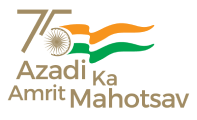Document Detail
‘Crop Insurance’ was introduced as a new department in IRDAI (Surveyors and Loss Assessors) Regulations, 2015 (hereinafter referred as Surveyor Regulations) with a view to license surveyors to undertake loss assessment of crop insurance claims. Schedule I of the Surveyor Regulations prescribes the qualification to be eligible for enrolment in Crop Insurance Department. The Surveyor Regulations also mandate the applicants to undergo 12 months training in the respective department under a senior surveyor and to pass the relevant paper(s) of ‘Surveyor and Loss Assessor Examination’ conducted by the Insurance Institute of India (III), Mumbai in order to obtain registration from the Authority. However, as the Crop Insurance department is newly introduced, there are no surveyors available to train the new entrants to carry out loss assessment in crop insurance.
In view of the above, it has been decided to waive the training requirements for the applicants who would like to enrol themselves in ‘Crop Insurance’ Department and apply for registration on or before 31st December, 2019. However, the applicants have to pass the relevant paper(s) of Surveyors and Loss Assessors Examination conducted by III, Mumbai to be eligible for registration as Surveyor and Loss Assessor in Crop Insurance. (The syllabus for Crop Insurance paper is as per Annex I).
The above decision is taken under the powers vested with the Authority in section 64UM of the Insurance Act, 1938, section 14 (2) of IRDA Act, 1999 read with Regulation 26 and Schedule I of Surveyor Regulations, 2015.
P J Joseph
Member (Non Life)
Encl :- Annexure 1
Annexure 1
SYLLABUS FOR INSURANCE SURVEYOR (SLA)
CROP INSURANCE (S-09)
Chapter 1: Introduction to Indian Agriculture: Situation of Agriculture in India – Growth of Agriculture over the years – Role of Agriculture in Indian Economy – Agricultural Census – Agricultural Resources – Land records computerization – Indian Agriculture in the post –independence era.
Chapter 2: Risks in Agriculture: Agricultural Risks – Changing face of Agricultural Risks in India – Climate Change and Agriculture – Managing Agricultural Risks.
Chapter 3: History of Crop Insurance in India: Individual based crop insurance – Pilot Crop Insurance Scheme (PCIS) – Comprehensive Crop Insurance Scheme (CCIS) – Experimental Crop Insurance Scheme (ECIS) – National Agricultural Insurance Scheme (NAIS) – Farm Income Insurance Scheme (FIIS) – Agriculture Insurance Co of India Ltd.
Chapter 4: Chapter 6: Crop Insurance - Yield Index based Underwriting and Claims: National Agricultural Insurance Scheme (NAIS) – Components – Nature, Coverage and Integrity – Underwriting – Claims – Yield Data – Yield Estimation Methodology – Actuarial premium rating
Chapter 5:Pradhan Mantri Fasal Bima Yojana (PMFBY-2016) – Unified Package Insurance Scheme (UPIS) (pertaining to crop insurance) – salient features, comparison of NAIS, MNAIS and PMFBY, etc.
Chapter 6: Weather Based Crop Insurance Model: Weather based Crop insurance – Weather Insurance components /Schemes – Challenges - Product Design – Market Response – Institutional Players – Other index models of Crop Insurance.
Chapter 7: Traditional Crop Insurance: Hail insurance – Conceptual framework – Plantation/ Horticulture/ Floriculture insurance schemes – Comprehensive floriculture insurance
Chapter 8: General Crop Estimation Surveys: Sampling method – Equipment – Method – Yield estimation.
Chapter 9: Special features of PMFBY: Individual Farm assessment of Crop Losses – localized calamities (flooding, hailstorm, landslide) – post-harvest losses – spot loss assessment Vs harvest time losses
Chapter 10: Production Risk Perils &Manifestation of Perils on Crops – Major climatic risks and its manifestation on different crops and various stages of crop growth – Major pests & diseases and its manifestations on crops and resultant losses
Chapter 11: Crop Loss Assessment – Principles and Objectives – approach – expectation – fairness – indemnity principle etc.
Chapter 12: Planning Crop Loss Assessment – understanding – planning – execution – reporting – loss adjustment, etc.
Chapter 13: Crop Loss assessment and Use of Modern Technologies– satellite imagery, unmanned aerial vehicles, rea-time digital pictures & videos, interpretation, etc.
******






